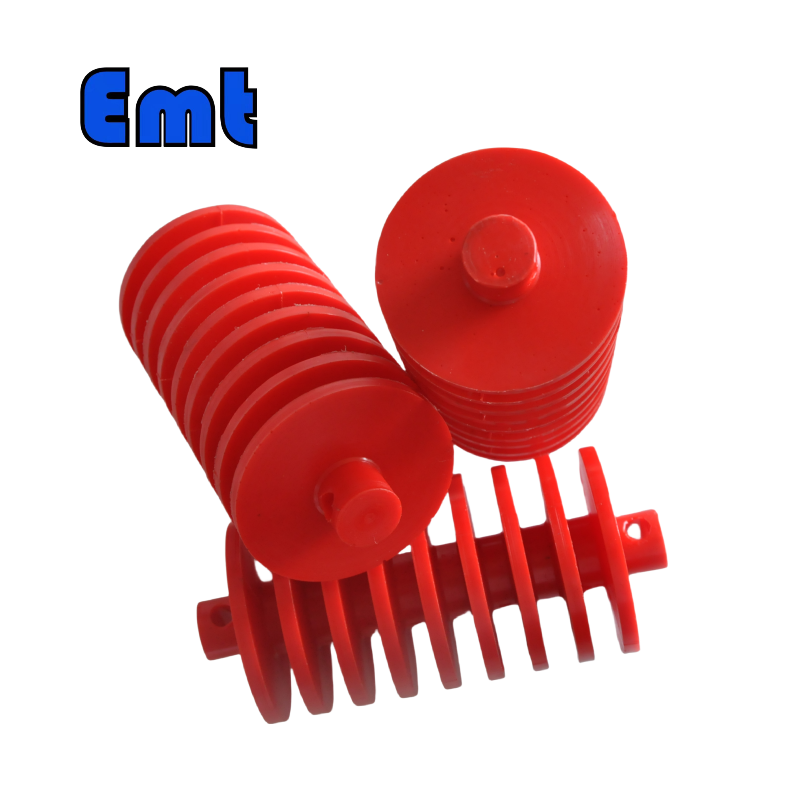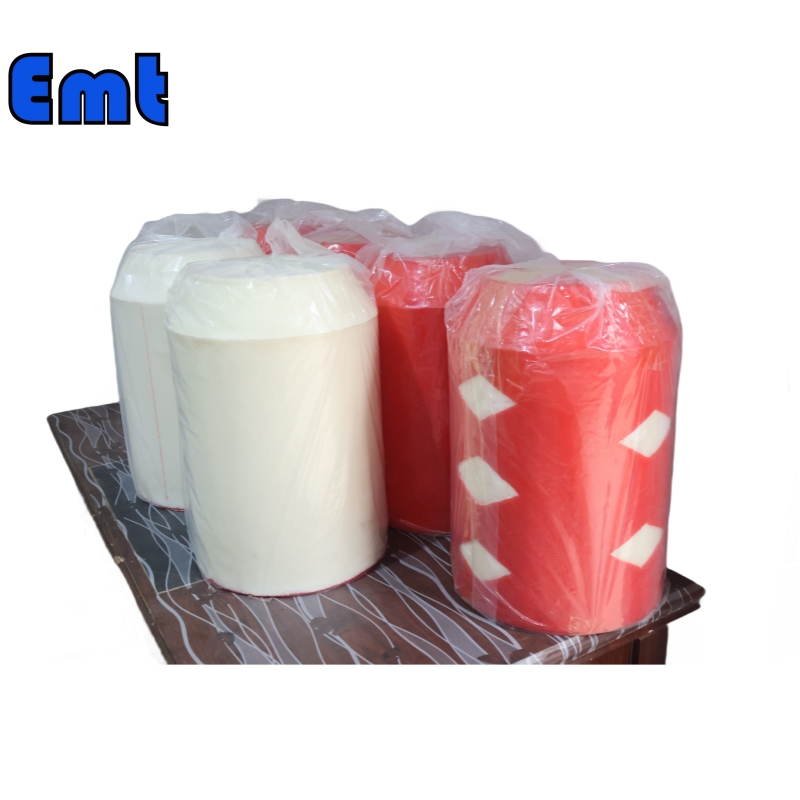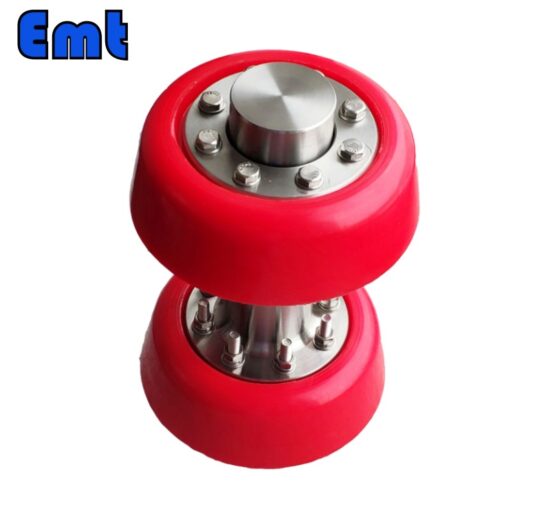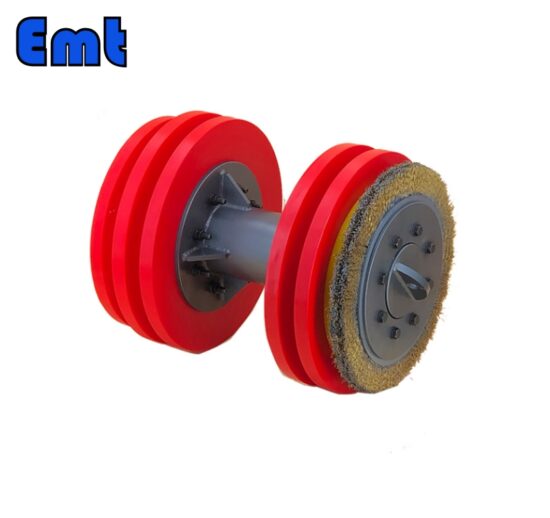أولا - مقدمة
مقدمة لتنظيف أنابيب الخنازير الرغوية
من بين الأنواع المختلفة من الخنازير المستخدمة في صيانة خطوط الأنابيب ، تبرز الخنازير الرغوية بسبب تعدد استخداماتها وفعاليتها. تم تصميم هذه الخنازير للتنقل في الأشكال الهندسية المعقدة لخطوط الأنابيب مع توفير التنظيف الشامل والتجفيف وفصل الدفعات. إن قدرتها على التكيف مع ظروف ومتطلبات خطوط الأنابيب المختلفة تجعلها الخيار المفضل لمهام الصيانة الروتينية.
نظره عامه
تقدم النقل عبر خطوط الأنابيب بشكل كبير كمكون أساسي للبنية التحتية في مختلف الصناعات ، لا سيما في مجال النفط والغاز. مع تطور أنظمة خطوط الأنابيب هذه ، زادت الحاجة إلى استراتيجيات صيانة فعالة لضمان طول عمرها وكفاءتها. أصبح الخنازير ، وهي ممارسة استخدام الأدوات المعروفة باسم "الخنازير" لإجراء عمليات التنظيف والتفتيش داخل خطوط الأنابيب ، أمرا لا غنى عنه. لا تساعد هذه العملية في الحفاظ على سلامة خطوط الأنابيب فحسب ، بل تعزز أيضا الكفاءة التشغيلية من خلال منع التوقف عن العمل والإصلاحات المكلفة.

II. فهم الخنازير الرغوية
تعريف ووصف الخنازير الرغوية
الخنازير الرغوية عبارة عن أجهزة أسطوانية أو كروية مصنوعة من رغوة البولي يوريثان ذات الخلية المفتوحة. وهي مصممة لاجتياز خطوط الأنابيب ، مدفوعة بضغط السائل الموجود فيها. تسمح المرونة والطبيعة خفيفة الوزن للخنازير الرغوية بالتكيف بسهولة مع الاختلافات في قطر الأنبوب والتنقل حول الانحناءات والعقبات دون الإضرار بخط الأنابيب أو الخنزير.
تكوين المواد وأنواع الخنازير الرغوية
المادة الأساسية المستخدمة في بناء الخنازير الرغوية هي رغوة البولي يوريثان ، والتي يمكن تخصيصها من حيث الكثافة والطلاء لتناسب مهام محددة. على سبيل المثال:
تستخدم الخنازير الرغوية منخفضة الكثافة لعمليات التنظيف والمسح الخفيفة.
الخنازير الرغوية متوسطة الكثافة مناسبة لمهام التنظيف والتجفيف الأكثر عمومية.
تستخدم الخنازير الرغوية عالية الكثافة للتنظيف الشاق ، بما في ذلك إزالة الترسبات الكلسية والرواسب الصلبة الأخرى.
III. تطبيقات الخنازير الرغوية
التنظيف: دور الخنازير الرغوية في إزالة الحطام والسوائل السائبة
الخنازير الرغوية فعالة للغاية في تنظيف خطوط الأنابيب. إنها مفيدة بشكل خاص في إزالة الحطام السائب والصدأ والسوائل المتبقية من جدران الأنابيب. هذه القدرة ضرورية في الحفاظ على كفاءة التدفق ومنع العوائق التي يمكن أن تؤدي إلى فشل خطوط الأنابيب.
التجفيف: استخدام الخنازير الرغوية لتجفيف خطوط الأنابيب بعد الصيانة
بعد عمليات الصيانة مثل الاختبار المائي ، يجب تجفيف خطوط الأنابيب لمنع التآكل. تستخدم الخنازير الرغوية ، خاصة تلك ذات الامتصاص الأعلى ، لإزالة الرطوبة وتجفيف خط الأنابيب الداخلي ، مما يضمن عدم وجود ماء يمكن أن يساهم في التآكل.
فصل الدفعات: كيف تساعد الخنازير الرغوية في فصل دفعات السوائل المختلفة لمنع التلوث
في خطوط الأنابيب المستخدمة لنقل منتجات متعددة بالتتابع ، تلعب الخنازير الرغوية دورا مهما في فصل الدفعات. إنها تخلق بشكل فعال حاجزا بين دفعات السوائل المختلفة ، مما يقلل من تلوث المنتج ويضمن نقاء كل دفعة. هذا التطبيق ذو قيمة خاصة في خطوط الأنابيب متعددة المنتجات في صناعات الأغذية والمشروبات والمستحضرات الصيدلانية ، حيث يمكن أن يكون للتلوث آثار خطيرة.
من خلال استخدام الخنازير الرغوية في هذه التطبيقات المختلفة ، يمكن لمشغلي خطوط الأنابيب ضمان التشغيل الفعال والآمن لأنظمة خطوط الأنابيب الخاصة بهم ، مما يقلل من المخاطر التشغيلية ويحافظ على جودة المنتج.

IV. مزايا الخنازير الرغوية
المرونة: القدرة على التكيف مع الاختلافات والعيوب في خطوط الأنابيب
تظهر الخنازير الرغوية قدرة رائعة على التكيف ، مما يجعلها مناسبة لخطوط الأنابيب ذات الأقطار المختلفة والانحناءات والمخالفات الهيكلية الأخرى. تضمن هذه المرونة قدرتها على توفير تنظيف فعال دون التسبب في تلف السطح الداخلي للأنبوب ، وهو عامل أساسي في الحفاظ على سلامة نظام خطوط الأنابيب بمرور الوقت.
الفعالية من حيث التكلفة: الفوائد الاقتصادية لاستخدام الخنازير الرغوية مقارنة بطرق الخنازير الأخرى
تعتبر الخنازير الرغوية بشكل عام أقل تكلفة من الخنازير الميكانيكية ، سواء من حيث التكلفة الأولية أو النفقات التشغيلية. تقلل بساطتها وفعاليتها في التطبيقات المختلفة من الحاجة إلى حلول خنزيرات أكثر تكلفة قد تتطلب مناولة أو معدات متخصصة ، وبالتالي تحسين ميزانيات الصيانة.
سهولة الاستخدام: البساطة في المناولة والمتطلبات التشغيلية
يسمح التصميم خفيف الوزن والمباشر للخنازير الرغوية بسهولة التعامل والتشغيل. لا تتطلب مرافق إطلاق واستلام معقدة ، مما يبسط عملية الخنازير ويقلل من متطلبات التدريب لموظفي خطوط الأنابيب ، مما يعزز عمليتهم في مهام الصيانة الروتينية.
V. تكوينات تنظيف أنابيب الخنازير الرغوية
الخنازير الرغوية المطلية: وصف وفوائد الخنازير الرغوية المطلية بالبولي يوريثين
يتم تعزيز الخنازير الرغوية المطلية بطبقة من طلاء البولي يوريثين مما يزيد من متانتها ويحسن قدراتها على الختم. هذا النوع من خنزير الرغوة مفيد بشكل خاص في التطبيقات الأكثر تطلبا حيث تكون مقاومة التآكل الإضافية وختم أفضل ضرورية لإزالة الرواسب المتوسطة إلى الثقيلة.
الخنازير الرغوية الكاشطة: استخدام الخنازير الرغوية المطلية بالمواد الكاشطة لمهام التنظيف الأكثر كثافة
لوظائف التنظيف الأكثر صرامة ، يتم استخدام الخنازير الرغوية الكاشطة. هذه الخنازير مطلية بمواد مثل كربيد السيليكون أو أكسيد الألومنيوم ، والتي تضيف عملية تنقية لحركة الخنزير عبر خط الأنابيب. هذا يجعلها فعالة للغاية في معالجة الرواسب الصلبة مثل الترسبات الكلسية أو تراكم الشمع أو المخلفات المجففة التي قد لا تعالجها الخنازير الرغوية العادية بشكل كاف.
VI. المبادئ التوجيهية التشغيلية لتنظيف أنابيب الخنازير الرغوية
الفحص المسبق للخنزير: أهمية فحص نقاط الدخول والخروج لخط الأنابيب
قبل إطلاق خنزير رغوي ، من الضروري فحص نقاط الدخول والخروج من خط الأنابيب للتأكد من خلوها من أي عوائق أو أضرار يمكن أن تعيق سفر الخنزير. يساعد هذا الفحص الأولي في منع المشكلات المحتملة التي قد تنشأ أثناء عملية الخنازير.
تكرار الخنازير: إنشاء جدول زمني روتيني بناء على استخدام خط الأنابيب
يعد تحديد تردد الخنازير المناسب أمرا حيويا للحفاظ على كفاءة خط الأنابيب. يجب أن يعتمد هذا الجدول الزمني على عوامل مثل نوع المنتج المنقول وكمية الحطام التي تتم مواجهتها عادة ونتائج الخنازير السابقة. يساعد الخنازير المنتظمة في الحفاظ على خط أنابيب نظيف ، وبالتالي تجنب خسائر الإنتاجية وعمليات الإغلاق المحتملة.
التحكم في السرعة: إدارة سرعة الخنازير الرغوية داخل خط الأنابيب للحصول على الأداء الأمثل
يعد التحكم في سرعة الخنازير الرغوية أمرا ضروريا لضمان تنظيفها بشكل فعال دون تجاوز أي أقسام من خط الأنابيب. سريع جدا ، وقد لا يزيل الخنزير جميع الملوثات. بطيء جدا ، ويمكن أن يتسبب في تآكل غير ضروري أو التعثر. تساعد الإدارة السليمة للسرعة على تحقيق أفضل توازن بين التنظيف الشامل والعمليات الفعالة.
VII. احتياطات السلامة
سلامة المشغل: تدابير السلامة للمشغلين أثناء عمليات الخنازير
أثناء عمليات الخنازير ، تعتبر سلامة المشغلين أمرا بالغ الأهمية. من الضروري التدريب السليم واستخدام معدات الحماية الشخصية المناسبة. يجب على المشغلين أيضا اتباع بروتوكولات السلامة المعمول بها للتعامل مع المواقف غير المتوقعة مثل ارتفاع الضغط أو أعطال المعدات.
الاعتبارات البيئية: مبادئ توجيهية للتخلص من الخنازير المستعملة والملوثات التي تمت إزالتها
يجب التعامل مع التخلص من الخنازير الرغوية المستخدمة وأي ملوثات تزيلها بمسؤولية لتقليل التأثير البيئي. يضمن الالتزام باللوائح والمبادئ التوجيهية البيئية المحلية التخلص من هذه المواد بطريقة لا تضر بالنظام البيئي.
ثامنا - الخاتمة
ملخص لدور وفوائد الخنازير الرغوية في الحفاظ على عمليات خطوط الأنابيب الفعالة والآمنة وغير المنقطعة
لذلك تلعب الخنازير الرغوية دورا مهما في الصيانة الوقائية والكفاءة التشغيلية لأنظمة خطوط الأنابيب. إن مرونتها وفعاليتها من حيث التكلفة وسهولة استخدامها تجعلها أدوات لا تقدر بثمن في صيانة هذه البنى التحتية الحيوية.
تشجيع مشغلي خطوط الأنابيب على دمج الخنازير الرغوية في بروتوكولات الصيانة الدورية
ثم يتم تشجيع مشغلي خطوط الأنابيب على دمج الخنازير الرغوية في جداول الصيانة الدورية الخاصة بهم لضمان الصحة والكفاءة المستمرة لأنظمة خطوط الأنابيب الخاصة بهم. لا يساعد الاستخدام المنتظم للخنازير الرغوية في الحفاظ على النظافة الداخلية لخطوط الأنابيب. ولكنه يساهم أيضا في السلامة العامة وطول العمر لهذه المكونات الأساسية للعمليات الصناعية.





لا توجد مراجعات بعد.